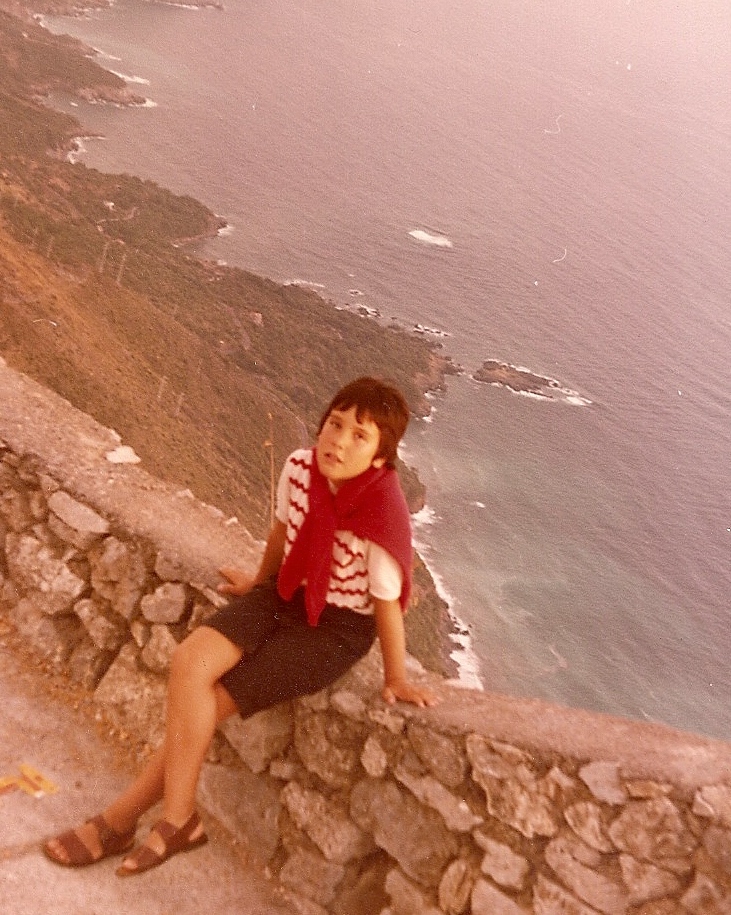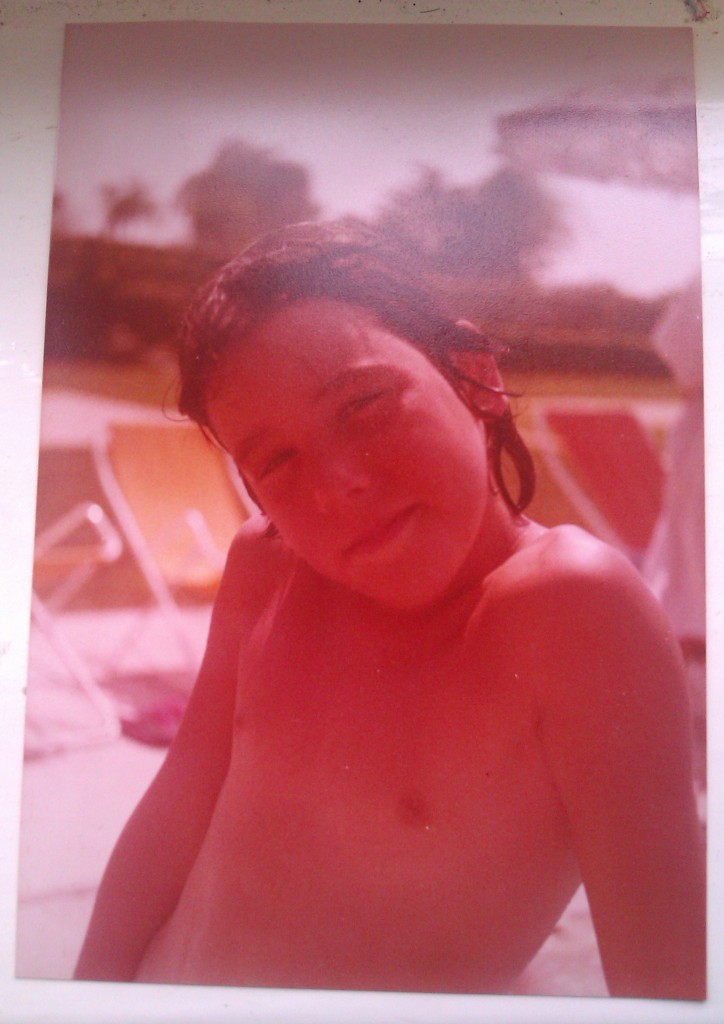I am a doctoral researcher based in UK and I am just about to complete my PhD research on media and young girls, project which was fully funded by a 3-years scholarship at Nottingham Trent University.
My main curiosity in undertaking my PhD project was finding out whether there was some kind of relation between girls’ media habits and their embodiment of femininity: in particular I was curious to see how young girls are influenced by the media pressure to look beautiful and sexy and which contextual factors make girls more resilient or more vulnerable to this pressure.
Due to my own past personal struggle with eating disorders I was also interested in seeing whether there was a connection between young girls’ media consumption, their perception of advertising and their body image issues.
During my research I felt tremendously inspired watching young girls (age 8-11) talking about their media experiences and I became more and more intrigued by their different ways of perceiving and expressing femininity, observing and hearing their stories, their reality of living in a media world saturated by images and messages which constantly suggest girls to act in a certain way. From advertising to TV programs, from videogames to magazines, from songs’ lyrics to music videos, the emphasis is relentlessly on showing off a good-looking and sexy outer shell, when there is so much more in every girl to be nurtured and cherished.
The world of these girls is so different from the one I grown up myself: comparing to them at the same age I would be considered on a strict “media diet”, with roughly half hour cartoon watching (I was obsessed with the popular 1980’s Japanese made, Candy Candy) and perhaps some good entrainment show or movie to share with the whole family in the evening. There were not computers, not mobile phones, not videogames, nor any other electronic gadget to distract my senses at that time. Equally, my looks did not match at all the modern tween girl fashion: looking at an old picture of mine in 1979 I can see how today I would probably be easily mistaken for a boy due to very short hair and boyish attire (often wearing clothes passed to me from my older brother). Perhaps one of the few things my 9-years-old self would have in common with my participant was the practice of playing with some kind of Barbie’s dolls (although of course today Barbie seems to be totally discarded as an early years toy and most 9-11 years old would not even dream to entertain themselves with it! Some girls at this stage have thrown away all their dolls, while for some Monster High dolls represent the perfect substitution and I’ll write a specific post about this).
As the girls were coming from a similar economic and socio-cultural background, I started to wonder whether the difference in their ways to perceive and embody femininity could be observed and linked to factors in their life and specifically I ‘ve decided to focus on family relationships and values, peers, extra-curricular activities, school attainment and, of course, media consumption.
During the analysis I started to see patterns of similar response emerging in particular sub-groups of girls and I could clearly see that their practical everyday choices regarding how to express their femininity was highly reflected in the way they responded to representations of girlhood in the adverts we watched during the sessions.
Most of the adverts I showed to girls were specifically targeted at their age group and markedly stereotypical in their representation of femininity (it should be added that this was far from intentional: during my search of suitable and recent TV adverts to show to my participants, I actually struggled to find any advert with counter-stereotypical representation of girlhood! I was able to find only a few exceptions which will be discussed further in another post).
This fundamental difference in their type of response, in their way to react to idealised depictions of femininity in adverts, seems to indicate that there are contextual and personality factors which influence girls’ perception of media images/messages. Let’s say that each girl has her own frame of reference, her own world from which she forms her believes and values –mainly whatever experience they live in the family and then in the school and the wider community will form their “lens”, through which they will look and make sense of an advert (or any other media content).
About one quarter of the total sample would be composed of girls who expressed a consistently high level of fascination towards glamourised images of femininity and typically these girls would transpose this fascination into their personal expression of “being a girl” and would actively look for media content and toys which satisfy this inclination. This is another factor to consider in today’s media environment: there is a lot of self-selective behaviour going on as compared to 10-20 years ago. The options regarding channels and programs have multiplied and most girls (at least the older ones and the ones who are not particularly limited in their media consumption by a strong parental control) have personal access to portable media devices which allow them not only to choose their own media content but to consume and interact with it on their own, often without any parental mediation.
The analysis helped me also to identify a group of girls who were consistently more critical or less fascinated in respect to glamorised and stereotypical images of femininity. I started to look closely at this group of girls to see whether I could locate any common potential factor able to account for their critical “positioning” towards stereotypical representations of femininity.
Some factor began to emerge: a strong bond with a close older brother (typically this situation would be characterised by shared playing and toys from an early age so that the girl would be introduced to a more unisex or boyish playing practice); a playful and satisfying relationship with the father, particularly if this is complemented by a flexible and non-stereotypical gender role orientation on his part (i.e. avoiding nicknames such as “my princess” or engaging with daughter in sports and activities which are typically associated with boys); experience of a wider range of extra-curricular activities; a more active parental control and/or mediation in the consumption of media.
But perhaps the most important thing that I learned from my micro-cosmo of young girls is that they learn from very young age that a girl/woman is appreciated by society mostly on the basis of her look & sexiness. And that most of them (even the ones who are not particularly “girly” in their orientation) conceive this as a POWER and fun, not as a limitation. During some of the group sessions we had interesting discussions and post-it notes exercises regarding the “good and bad things about being a girl” (see more details in the www.TheGirlsProject.co.uk website – under the tab “stereotypes”).
The BEAUTY MYTH described by Naomi Wolf is exactly this: the fact that WE – as young girls before and then as women – do not realise in the slightest the limitation and oppressive ideology behind it. Because the idea is sold so effectively as a “power” by an increasingly pervasive system of media which works in complete collusion with the commercial interests of advertisers, it becomes utterly entangled into our femininity from a very young age.
The problems I’ve experienced during adolescence and throughout my twenties are common to an increasing number of girls and a clear reflection of the struggle on the part of girls to define and construct their own female identity in terms of the highly contradicting dictates of societal and media pressure regarding femininity. I believe that the pressure young girls feel today is more present and ubiquitous than ever before and we should act on this problem AS EARLY AS WE CAN, without waiting that these girls entered adolescence, as probably at that point it will be a lot harder to intervene because these ideas will be already totally “ingrained” into their being.
Having read previous researches and the statistics on young girls’ body image, I shouldn’t have be surprised to see that only 24% of my sample (N= 37 girls) was satisfied with their body (you can see the bar chart according to age on the research website www.TheGirlsProject.co.uk).
My mission is to change this and due to the hell I have been during my twenties, I think I have plenty of personal reasons for it!
If at least we could change the way girls react to media. If we can’t change the whole system at least we can change girls awareness of the manipulation behind…making them recognising that there is oppression and manipulation behind so that maybe they won’t waste many years of their life in search for pointless appearance gains and they will really understand the truth meaning of finding oneself, becoming the girl/woman they want to be following their own passion and natural talent.
To do so, girls need to be put in the condition to discern hype, misconceptions and financial or ideological manipulations behind media content. Only in this way they will be using what they see in the media as an inspiration instead of an ironmaiden (as Naomi Wolf called) without getting too distracted or constricted by media and celebrities culture.
Ideally we (as girls and women) should be much more aware that there is a slow, constant and relentless brainwashing in action and the values and rules we think are natural are in reality imposed by a system with financial interests behind.
Where do I start? How can I do this? Publishing my results in academic articles would advance my career and make my research credible to the scientific community, but I doubt it would bring any actual social change.
OK…read my next post to see what my project is… 🙂 ))


